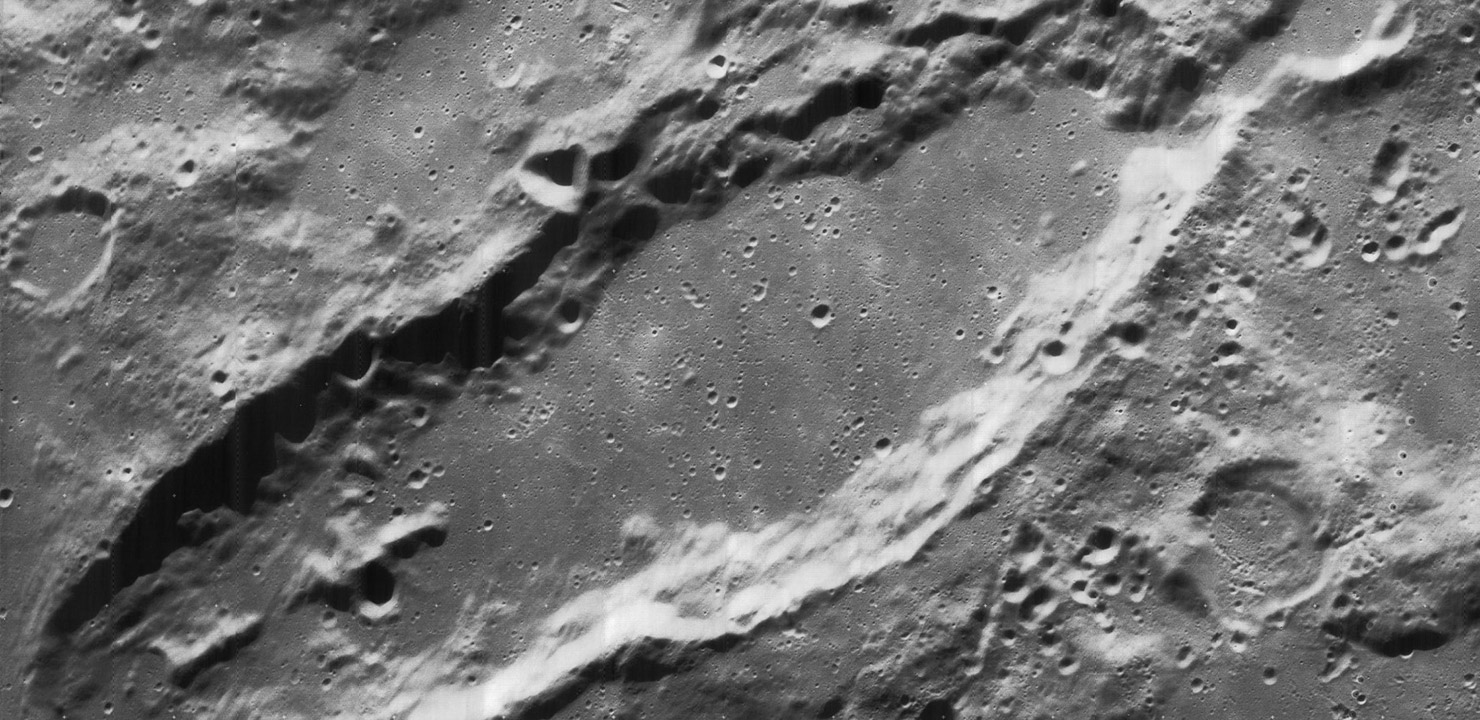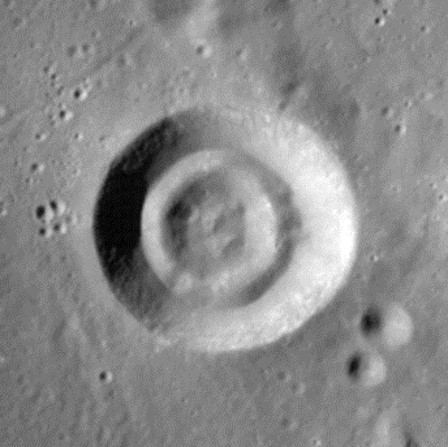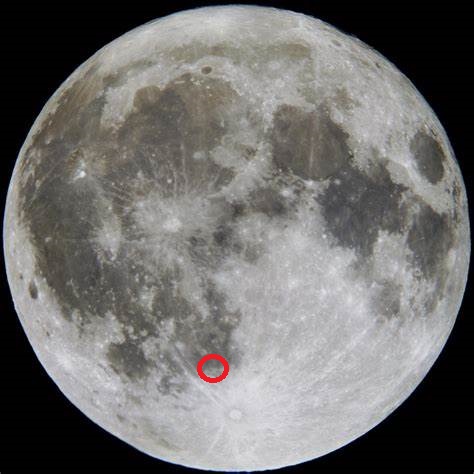
Lunatic’s Corner: Mysteries of Crater Schiller
December 2022 :
Lunatic’s Corner is a bi-monthly column discussing all things lunar with origins in Skyscrapers Lunar Observing Program group.
The crater named for Julius Schiller can be found in the southwest quadrant of the moon, very close to the limb and is best viewed on lunar days 11 and 24. Oddly shaped, it somewhat resembles an elongated footprint. The elongation is amplified by its location close to the lunar limb. It is found within a larger structure called the Schiller-Zucchius Basin. Also known unofficially as the Schiller Annular Plain, the Pre-Nectarian basin contains an eroded outer ring about 200 miles in diameter and a partial inner ring.
The crater is 112 miles long by 44 miles wide and is approximately 2.5 miles deep. The walls are terraced with evidence of a significant slide on the northern wall. The floor is primarily smooth, most likely due to lava flows occurring after impact. A strange, double ridge exists in the northern section that cuts the crater in half. The origin of these ridges is not well understood. At the southern terminus, crater Rost B is connected to Schiller by a wide valley. It is not known whether this valley was formed by volcanic activity or by other geologic processes such as igneous intrusion.
It is not known exactly how this crater was formed but upon close observation, one can see the outlines of three possible impact craters within the larger structure. No natural impact or occurrence can explain the odd shape of this crater. The most credible theory is that a group of meteoroids struck simultaneously, the high heat and melted material obliterating evidence of the separate impacts.
The crater’s namesake, Julius Schiller was a monk, lawyer, and astronomer who lived from 1580-1627 in Augsburg, Germany. He was a close friend of Johann Bayer, author of the famous Uranometria star atlas (1603) and with his support, published a Christianized version of a star atlas in 1627. The 12 zodiac signs were replaced with the twelve apostles, the northern constellations to New Testament figures, and the southern constellations to Old Testament figures. This atlas, though noted for its artistry and originality, was not considered a serious scientific work by the academic community.
There are many unknowns about crater Schiller including its origin, shape, ridges, and valleys making it an interesting object to observe and study. Put this crater in your eyepiece for a view of a very unique and mysterious lunar feature.


Michael Corvese is a confirmed lunatic of many years regardless of his recent interest in lunar observing.



